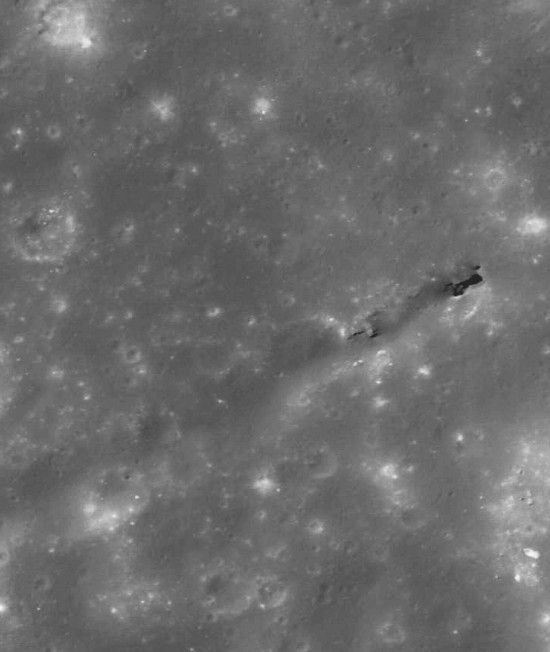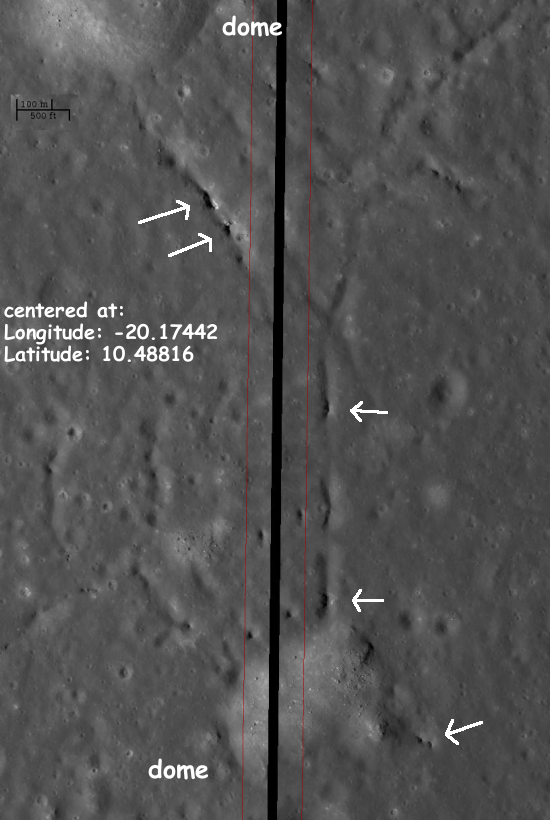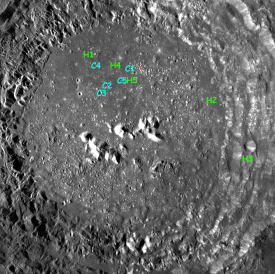Exploring the floor of Copernicus
The Lunar Reconnaissance Orbiter website recently announced a new way to tour the Moon. The website, called QuickMap, allows a user with any home computer to zoom into any spot on the lunar surface and see the high resolution images being taken by Lunar Reconnaissance Orbiter.
Using QuickMap, I spent a few hours this past weekend strolling about on the northern half of the floor of the crater Copernicus. It is in this area, annotated in the image on the right, that NASA engineer James Fincannon has already located a slew of collapse features and possible caves, the images of which I have posted previously on behindtheblack. (Click on the image or here to see a larger version of this updated index map.)
(You also can go sightseeing there if you wish. Go to QuickMap and zoom in on 10.1 latitude and -20.1 longitude to get to the floor of Copernicus. Or pick your own spot on the lunar surface and do some of your own exploring!)
What I found in the northern half of Copernicus’s floor was a plethora of possible caves and collapse features. Literally, the crater floor is littered with what appear to be pits, fissures, rills, and sinks. More significantly, sometimes the cave entrances line up with long straight collapse features, suggesting strongly the existence of extensive underground passages beyond the initial entrance pits.
Nor is this surprising. The floor of Copernicus is the floor of an impact crater, and when the impact happened, the floor became a sea of molten rock. As that rock hardened, a crust formed. Below, the lava continued to flow, and in many places it drained away, leaving behind many voids. See for example this image from Lunar Reconnaissance Orbiter of the floor of Giordano Bruno crater. There, the crust of the impact melt pond hardened first. When the lava below finally solidified below, it apparently shrank, causing that surface crust to crack and buckle.
On Earth, a similar process occurs when lava flows down the sides of volcanoes. The crust forms on the lava, which then flows out from under that crust, leaving behind a lava tube that can sometimes extend for miles.
One of James’ most recent finds, shown below, is an excellent example of this. The cave (H4 on the index map) is located at the end of what looks like an elongated gully. That gully was obviously not created by flowing water on the surface. Instead, it likely signals the existence of a underground passage or fissure extending to the southwest from the cave entrance.


What makes this particular cave exciting is that first, depending on the lighting, it appears it might possibly be the first known walk-in lunar cave. Compared with the picture above, the close-up image to the right shows more light shining onto the floor of the gully, suggesting that the gully itself might ramp down into the cave. More images with different lighting are necessary to find out if this is true.
Second, a wider shot of this area, shown below, shows two more possible cave openings, both of which are lined up with additional fissure sinks. The dome in the center is also another feature formed during these melt processes. (See this description of the Hortensius Domes area for a more detailed geological explanation of the dome.)

When I started to play around with QuickMap, I was astonished how quickly I found more caves. To the west and very close to H4 I immediately spotted three more fissure openings (see below), all neatly lined up like three skylight openings, once again suggesting an underground fissure passage below.

Traveling north from H4 I found many similar features. The image below shows one of the more distinctive, a series of apparent pits lined up along a faint gully or rill.

The last image below is even farther north, only about a mile south of the foothills of the crater’s north rim. Here we see two domes at the top and bottom of the image, each with a rill or gully (with skylights) flowing away from the dome. I am not a geologist, but if I had to guess I’d say that when the dome formed, pushing up from below, it caused cracks to appear in the surrounding terrain, down which lava flowed, forming the rills and pits that we now see.

These few examples are just a taste of what I found. The northern half of the floor of Copernicus seems littered with cavelike features, making it potentially an excellent location for future colonists. With this many underground passages, I can literally imagine a lunar city being built here.
More data is obviously necessary. Different lighting might reveal that these shadowed areas are only deep ravines, not pits. Then again, new images with different lighting might tell us exactly which of these caves is the easiest to enter.
Anyway, what makes this whole experience most exciting to me is the ease in which I was able to poke around on the QuickMap website and quickly find these cave features. If more people start exploring the lunar surface with this internet software, we may soon find many more caves in many other places on the lunar surface. For example, what does the floor of the crater Tycho look like? What about some of the craters close to the poles?
And the more caves we find, the more evidence we provide for proving the Moon a practical place for future explorers to build their lunar settlements.
On Christmas Eve 1968 three Americans became the first humans to visit another world. What they did to celebrate was unexpected and profound, and will be remembered throughout all human history. Genesis: the Story of Apollo 8, Robert Zimmerman's classic history of humanity's first journey to another world, tells that story, and it is now available as both an ebook and an audiobook, both with a foreword by Valerie Anders and a new introduction by Robert Zimmerman.
The print edition can be purchased at Amazon or from any other book seller. If you want an autographed copy the price is $60 for the hardback and $45 for the paperback, plus $8 shipping for each. Go here for purchasing details. The ebook is available everywhere for $5.99 (before discount) at amazon, or direct from my ebook publisher, ebookit. If you buy it from ebookit you don't support the big tech companies and the author gets a bigger cut much sooner.
The audiobook is also available at all these vendors, and is also free with a 30-day trial membership to Audible.
"Not simply about one mission, [Genesis] is also the history of America's quest for the moon... Zimmerman has done a masterful job of tying disparate events together into a solid account of one of America's greatest human triumphs."--San Antonio Express-News


